
Nice to meet you in Beijing and welcome to China! Once you get off your plane, the guide holding your name sign will wait for you in advance at the arrival hall. Along the way, if you have any questions, please tell your guide in no time and we will try our best to help you. You will be transferred to the hotel then, just take a rest and prepare for the following trip!
As the capital of China and a first-tier city in the world, Beijing has a history of more than 3,000 years. Therefore, it is highly recommended that you visit the local historical and cultural sites to experience more. In the morning we will drive to visit Tian’anmen Square and Forbidden City first.
Tian’anmen Square is the champion urban square in the world today. It is also the sacred place for the People’s Republic of China to hold major celebrations, grand gatherings, and welcome foreign guests. Covering 440,000 square meters, the square is equivalent to the area of one Vatican and can accommodate a million people for a huge gathering. In the center situates the Monument to the People’s Heroes. Just north of the square is the Tian’anmen Gate where you will find a large portrait of Chairman Mao hanging above the gate. The portrait is 6 meters high and 4.6 meters wide and weighs about 1.5 tons in total. It will be redrawn every year before the National Day holiday (October 1) celebration.
As we all know, this is the place where the national flag-raising ceremony is held when there will be many tourists. But have you heard the story about the stone lion in front of Tian’anmen Square? The two pairs of stone lions were carved in the Ming Dynasty (1368-1644), nearly three meters high to demonstrate the majesty of the imperial family at that time, more than 600 years ago. Their eyes focus firmly on the middle of the road. Visitors find that there is an obvious hole on the chest of one stone lion. Was it something of vandalism or a mistake during carving? It was said that this hole witnessed a historical event or a very interesting story. The protagonist had something to with a person—Li Zicheng (the leader of the late Ming peasant uprising). At the end of the Ming Dynasty, Li Zicheng led the rebel army and marched into Beijing with great force. As the Ming emperor had hanged himself, the officials and soldiers guarding the Tian’anmen Rostrum had no desire to resist. Soon Li Zicheng was able to attack it. But the general guarding it kept on fighting while he realized that there was no chance to win, so he told his soldiers to hide behind the stone lions. It was at night when Li Zicheng saw a shadow behind the lion and shot towards it with a steel spear. That’s how the hole was left. Until today, these four stone lions, together with the guards there protect Tian’anmen Square every day regardless of wind and rain.
Then it is Forbidden City (closed on Mondays), one of the largest and most intact ancient wooden structures in the world, which was listed as a world cultural heritage in 1987. Its construction started from the year of 1406. According to history, it took 100,000 best craftsmen and 1,000,000 laborers 15 years to complete the construction of this huge imperial palace, which is rarely seen in the world. After that, the later emperors rebuilt and expanded it many times, but the overall appearance remained unchanged. A total of 24 emperors lived in it. There are 9,999 rooms, and each door is adorned with nine copper doornails. This strange number phenomenon has something to do with the understanding of the ancient Chinese to numbers. Ancient Chinese people believed that the number “9” was the biggest number in the world, and the emperor was the most commanding. Besides, the Chinese pronunciation of “9” is related to the meaning of “forever”, so it also implies that the country will last forever.
After lunch, let’s go to the Temple of Heaven. The Temple of Heaven acts as the largest temple complex in the world. It is divided into two parts, the inner altar, and the outer altar. The main buildings can be found in the inner altar. Among the attractions there is one very interesting—Triple Echo Stones, referring to the three stone slabs on the stone road of the Imperial Vault of Heaven. The wonderful thing is that when you stand on the first stone and speak to the Imperial Vault of Heaven, you can hear an echo; if you speak on the second stone, you hear the echo twice while three echoes will be heard on the third stone. Moreover, the third stone is also called “thunderstone”, meaning that the echo is particularly loud, like thunder.
The next attraction we visit is Hutong. Hutong is the passageway between quadrangle courtyards, a kind of building that consists of four houses in the east, west, north, and south in a square and symmetrical form. There are thousands of Hutongs in Beijing, formed during the Yuan, Ming, and Qing Dynasties (the years of these three dynasties spanning from 1271-1912) in Chinese history, most of which were formed in the 13th century during the Yuan Dynasty (1271-1368). The Hutongs run from east to west and are generally no more than nine meters wide, with the narrowest one measuring only 0.4 meters. Local people also give different names such as “Small Trumpet Hutong” and “Willow Hutong” to each Hutong for the place names, the Hutong shapes, or local trees. People in Beijing have a special feeling for Hutong, which is a passageway to get in and out of their homes. It is usually close to the downtown area but without the bustle of traffic. After that, you will experience the Hutong Rickshaw Tour, which is a kind of human-powered tricycle. It’s a great experience to travel through the Hutongs on a tricycle!
After finishing today’s tour, you will return to the hotel accompanied by your guide.
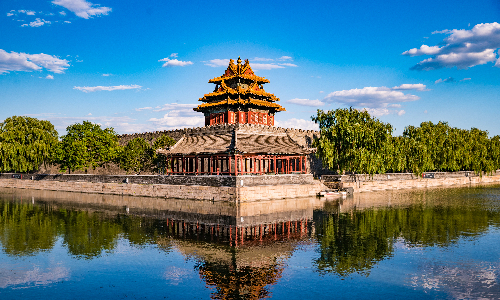
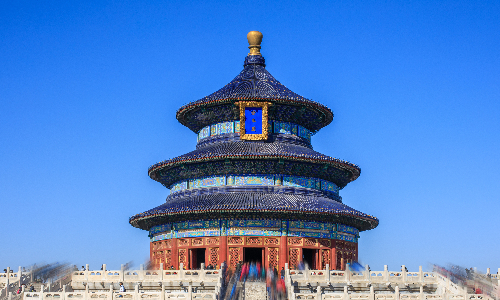
After breakfast, we will drive about 50 minutes from the Forbidden City to the Ming Tombs, 43 kilometers away. The Ming Tombs, built between 1409 and 1645, are the largest (owning the biggest number) emperor mausoleums in China and even the world, as well as a world cultural heritage site. Thirteen tombs of emperors, seven concubines, and one tomb of eunuchs have been built here over years. Today we are going to visit one of the emperor’s mausoleums, the Chang Tomb.
The Chang Tomb is the largest and oldest one, with a square layout in the front and a round one in the back. It was built in 1409 for the joint burial of the Yongle Emperor and his wife. It was said that he attached great importance to the defense of the north and intended to move the capital to Beijing after he became emperor. The most important thing was to choose the site of the mausoleum for himself in Beijing. Emperors in the Ming Dynasty believed in “Feng Shui” (also known as Chinese geomancy). So, when the empress died, he followed the advice of a Taoist priest and chose the mausoleum site in Beijing.
Badaling Great Wall is saying hello to you for your afternoon trip. There are four most distinctive features of it. First, it is the most popular place for tourists from home and abroad. Badaling Great Wall had received people from at least 178 countries, accounting for 91% of the world’s total. The second is that it plays the most important role in greeting the heads of state and government with the largest number. Richard Milhous Nixon, Ronald Wilson Reagan, Queen Elizabeth II, and other leaders (more than 400), and a large number of world figures have left their footprints here. Third, Badaling Great Wall is the scenic spot of the Great Wall that holds the most international cultural exchange activities. Especially since 1996, more than 60 large-scale activities have been successfully held such as “the Badaling Great Wall International Culture and Art Festival”, and “the Badaling Great Wall New Year’s Day International Mountaineering Festival”, etc. Forth, it is the most outstanding representative approved as the earliest open to the outside and the first choice to receive state guests. As early as 2002, as the representative of the Great Wall, it received the certificate of “the longest wall in the world” issued by Guinness World Records.
After visiting these places, are there any other places you would like to take photos of? On the way back to the hotel, you will also take photos with Water Cube (the main venue for water sports programs of the 2002 Beijing Olympic Games) and Bird’s Nest (the main stadium of the Beijing Olympic Games).
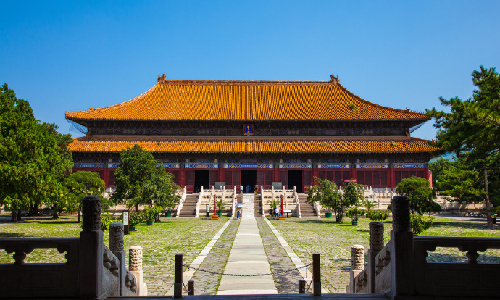
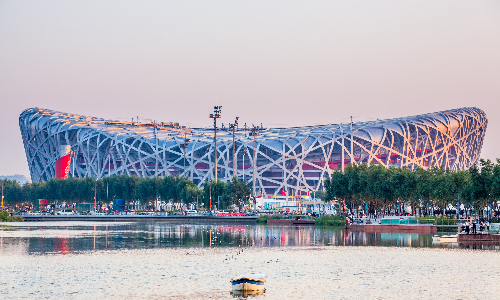
 Hong Kong
Hong Kong Today your guide will send you to the airport and you will fly to Hong Kong by an estimated flight CX391 13:40/17:35, which is the Pearl of the Orient and the third largest financial center around the world. It globally leads the first place concerning the average life expectancy and the fourth one in terms of the human development index. Also, New York, London, and Hong Kong are ranked as “Nylonkong”. Please be assured that there is another guide who will pick you up in Hong Kong. When you arrive at the airport, the guide will send you to a local hotel where you can relax first or walk around outside the hotel as you like.
After breakfast, your guide will accompany you to Wong Tai Sin Temple first. Founded in 1921 and located in the bustling district of Kowloon, it is one of the most famous temples in Hong Kong. More than 3 million worshippers visit the site each year, making it popular in Hong Kong and abroad. It is said that Wong Tai Sin was committed to curing and saving people, and helped people in danger, making his virtues widely known. He was beloved by the general public, and people decided to set up a temple to worship him. Legend has it that Wong Tai Sin was responsive to any request from people. Therefore, endless streams of followers come here to pray. On the first day of the Chinese New Year every year, in particular, people will contend for burning the first joss stick. Even in the high temperature of more than 30℃, there are still a large number of people praying for divination sticks or burning incense.
In addition, it is not a temple for any particular sect. There are also Taoist, Confucian, and Buddhist deities in the temple, such as Confucius and Avalokiteśvara. Accordingly, the integration of the three religions is one of the features of Wong Tai Sin Temple. What is more interesting is that this temple is the first Taoist temple in Hong Kong to receive approval from the Hong Kong government to hold a Taoist wedding ceremony and to issue marriage certificates, which is rarely seen or allowed in other temples.
Then we will go to Victoria Peak, one of Hong Kong’s premier tourist attractions. This place attracts so many tourists for the following two reasons. First, the Peak Tower, designed by the famous British architect Terry Farrel, is a unique bowl-shaped building with seven floors and a total area of 10,400 square meters. It is a must-see for sightseeing, entertainment, and shopping in Hong Kong, and photos of it have been used in millions of postcards around the world. Standing on the Peak Tower, you can have a panoramic view of Hong Kong. Secondly, tourists need to take the Peak Tram to the top of the mountain for sightseeing. Peak Tram is the most weather-beaten and representative life witness through Hong Kong’s century-old history. It was officially shown to the world on May 30, 1888, forming the earliest cable car cableway system in Asia. In the 1950s, Hollywood was attracted by the famous Peak Tram and Victoria Peak, whose pictures were used for film shoots. Today, more than 4 million people from all over the world ride Peak Tram every year, or 11,000 people a day.
Repulse Bay is the next place you will visit, which is a crescent-shaped bay with mountains and sea and also has the reputation of “Oriental Hawaii”. It is one of the most expensive residential areas in the world. Are you curious about its name? It is difficult to trace the origin of the bay’s English name. There are, however, many stories while none is resting on any solid evidence. A typical one is that in 1841, the bay was used as a base by pirates and gained much attention from foreign merchant ships trading with China. The pirates were subsequently repulsed by the Royal Navy, thus forming the name. At the southeast end of it, there is a tower building with the Chinese style, whose roof is decorated with a flying dragon. In front of its gate, there are two deities’ statues with a symbol of protecting fishermen and swimmers.
The water temperature ranges from 16℃ to 27℃, thus having always been a popular resort for Hong Kong people to enjoy the summer days and also a famous scenic spot that tourists must visit. At the eastern end of Repulse Bay, there are many barbecue grills under trees with which tourists can enjoy themselves after surfing in the bay. Many bars, fast food restaurants, and supermarkets around the beach stand in a row, too. Moreover, it is suggestive to linger longer here to explore more about such a shopping plaza.
Finally, you will go to Stanley Market where you can feel a sense of traveling in Europe or Australia. It is an old traditional open-air market in Stanley. It is also well known for its bargains as a major tourist attraction, and you can have much fun bargaining with shop owners. Many of the stalls or shops here sell Hong Kong souvenirs. In particular, they sell silk garments, traditional Chinese dress, toys, luggage, souvenirs, paintings, and Chinese arts and crafts. You can perhaps find some foreign exchange shops.
After your tour today, the guide will send you to the hotel.
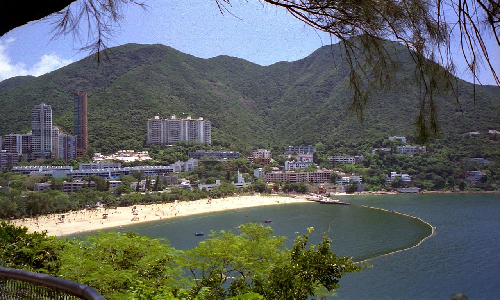
In the morning, we will drive southwest to Lantau Island, which lies to the west of Hong Kong Island and 34 KM (about 35 minutes) away from Tsim Sha Tsui. It is the largest island here. There is a traditional fishing village of Tai O and the world’s largest bronze Buddha. When arriving at Ngong Ping Cable Car Station, we will take a standard cabin first. Along the way, you can overlook the lush Lantau Island, and you can also see the tall buildings by the sea. Besides, it is a good chance to take a look at the huge Hong Kong International Airport where planes take off or land at any time, making children very excited. After about 25 minutes, you will arrive at Ngong Ping Village. This village features traditional Chinese architecture. Small as it is, it contains an assortment of shopping and dining experiences and cultures globally. Furthermore, the international cable car gallery here will display cable car replicas from countries including China, Switzerland, Italy, Brazil, Austria, France, Italy, Germany, etc.
Then we continue to see Big Buddha and Po Lin Monastery. The Big Buddha is a large bronze Buddha built in the early 1990s, designed and made by the Ministry of Aerospace Science and Technology of China. It is 26.4 meters tall, with three layers on the base which is a model of the Temple of Heaven in Beijing. With a total height of nearly 34 meters, it covers an area of about 6,567 square meters and weighs up to 250 tons. It is also made of 200 bronze castings, and an exhibition hall is provided with a large clock which is controlled by a computer and strikes every seven minutes for a total of 108 times.
The monastery, located on Ngong Ping Plateau, is a Buddhist monastery established in 1906 by three monks from the Chinese mainland. It got its present name in 1924. It boasts many eminent architectural structures, such as the Hall of Bodhisattva Skanda, and the Main Shrine Hall of Buddha. It houses three bronze statues of the Buddha which represent his past, present, and future lives, as well as many Buddhist scriptures. Apart from that, this monastery is also noted for making wooden bracelets that are only sold near the Big Buddha statue.
After visiting these attractions, we will return first by a standard cabin and then go back to the hotel by car. You can do whatever you want for the rest time.
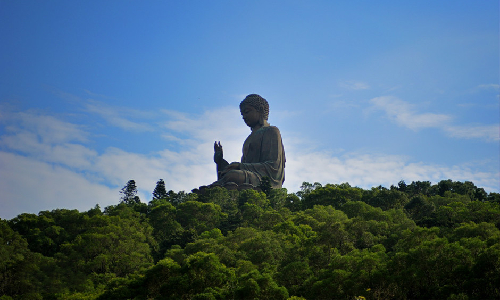
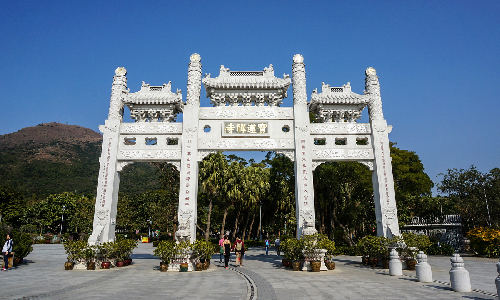
 Macau
Macau Hong Kong
Hong Kong After finishing your breakfast, you will go to Hong Kong-Macau Ferry Terminal to take a ferry to Macau, which will take you about 1 hour. Take it easy that there will be a guide waiting for you in Macau who will be responsible for your trip there. Macau emerges as an international free port, the world tourism and leisure center, and one of the world’s four major gambling cities.
The first scenic spot you will have a look at is the Ruins of Saint Paul’s. The Ruins of Saint Paul’s are the ruins of a 17th-century Catholic religious complex with a span of more than 350 years. They include St. Paul’s College and St. Paul’s Cathedral at that time. Today, the ruins act as one of Macau’s best-known landmarks and one of the Seven Wonders of Portuguese Origin worldwide. In 2005, they were listed as part of the Historic Centre of Macau, a UNESCO World Heritage Site. It is the symbol of Macau and there is a popular saying among local people that “if one doesn’t go to the Ruins of Saint Paul’s, one is not considered to have been to Macau”. Many local people like to leave a wedding photo here as a souvenir when they get married. Although it has lost its actual function as a church, it is closely related to the life of the Macanese people. Various cultural activities are held here from time to time, and the long steps in front of it just become natural seats, making it become charming scenery. The art museum in the inner square houses the oldest paintings of the Oriental religious life.
The Mont Fortress, located beside the Ruins of St. Paul’s, was built in 1616 of the Ming Dynasty. It is the largest and oldest of the numerous fortifies in Macau, as well as one of the oldest western-style fortifies in China. Being a part of St. Paul’s College and St. Paul’s Cathedral, it was built to protect the clergy in the church from pirates and was later converted into a military facility. Covering an area of about 10,000 square meters, the fortress is an irregular quadrilateral with sides of about 100 meters long. On the fortress there is a large open space with green grass, old trees, and giant steel cannons standing nearby; under the fortress is a bronze statue of Matteo Ricci, who has made outstanding contributions to the cultural exchanges between China and the West. Serving as a nice place to overlook Macau, you can also take great photos here.
Senado Square is a paved town square as well as a part of the UNESCO Historic Centre of Macau World Heritage Site. There is a fountain in the middle of the square, so the local people call the square a “fountain”. It, occupying an area of 3,700 square meters, is an elongated triangular-shaped square being wide in the south and narrow in the north and a lively area for commercial and cultural activities. The name origin has something to do with the Leal Senado, a place located directly in front of the square for the Chinese and Portuguese from the 16th to 18th centuries to hold meetings. Many buildings around are European styled and are protected monuments. Many large events in Macau were hosted on the square such as the Lunar New Year, the International Art Festival, and other performances. The governors of Macau also used it to inspect troops here. Some Hong Kong films in the 1950s and 1960s had scenes shot here. In addition, relevant organizations will also hold performances here for the public to enjoy.
Another place of interest is A-Ma Temple, a temple to the Chinese sea goddess Mazu, and also one of the earliest Taoist temples in Macau. Built by a merchant from Fujian Province, southeast China, it has a history of more than 500 years. Legend has it that more than 400 years ago in the Ming Dynasty, the merchant was in danger of a hurricane. Fortunately, the sea goddess saw that and rescued him. Later, the merchant set up a temple to commemorate the goddess for her kindness. Moreover, in the 1980s, there was a big fire in the temple, and the whole temple was burned down. The statue of A-Ma in the center of the shrine was only blackened by fire, and the collapsed beam fell in front of the statue, leaving no damage to it. The A-Ma Temple, leaning against a mountain and facing a sea, is built along the cliff and surrounded by towering ancient trees. There is a pair of stone lions at the entrance of the temple. The flowers, trees, and rocks are scattered in the temple. Every Spring Festival and the 23rd day of the third lunar month, people visit here constantly. From New Year’s Eve, many believers have come to worship her, showing such a lively atmosphere. At present, not only is “Mazu” regarded as the “Queen of Heaven” by believers, but also she is related to an international cultural phenomenon — “Mazu Culture”.
In the afternoon, you will go to another two spots. The first one is Macau Tower, a new landmark, which was built in 1998 and officially opened to tourists in 2001. With a total height of 338 meters and a total of 56 floors, it is one of the world’s top ten observation towers, the tallest sightseeing steel tower in Southeast Asia, surpassing the Eiffel Tower in Paris, and also a member of the World Federation of Great Towers. The tower is also used for telecommunications and broadcasting besides observation and entertainment. Here, you can enjoy the best view of Macau and in recent years it has been used for a variety of adventurous activities. Accordingly, it has been a site for staged bungee jumping events, by professional jumpers, or as part of entertainment shows. On December 17, 2006, the father of contemporary bungee jumping, A. J. Hackett, broke the Guinness World Records at the Macau Tower.
The second spot, Venetian Macau Resort Hotel acts as Macau’s new landmark and is the second-largest building in the world and the largest in Asia. It takes the architectural style of the Venetian Resort Hotel in Las Vegas, making people feel as if they are in Venice, Italy, with a total investment of 20 billion yuan. Here you will take a closer look at the Casino in the Venetian Macau Resort Hotel which is located on the ground floor and covers an area of more than 50,000 square meters. There are 850 gambling tables and 4,100 slot machines, the largest number of gambling tables in the world! The decoration is so resplendent. You can feel free to watch people gambling to experience the atmosphere closely.
Time is over for today’s travel. Do you feel unforgettable about Hong Kong and Macau? You will get to Kowloon Ferry Terminal in Hong Kong from Taipa Ferry Terminal in Macau by ferry in about 1 hour. Your guide in Hong Kong will pick you up and take you to the hotel.
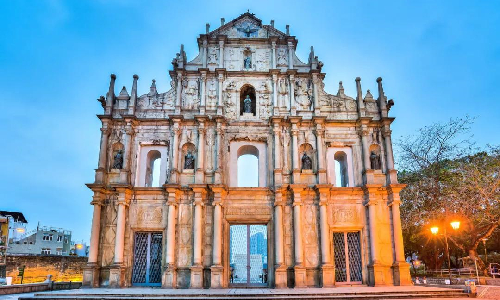
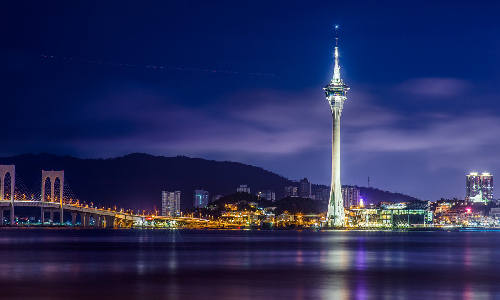
Are you satisfied with your 8-day China travel? We are so honored and happy to serve you and looking forward to seeing you again. If you want to learn more travel details about other places in China, just contact us at any time. The guide will take you to the airport according to your flight and wish you a good journey to your sweet home!
Author: Tingting Li
| City | Five Star hotel list | Four Star hotel list |
|---|---|---|
| Beijing | Sunworld Dynasty Hotel Beijing Wangfujing | Sunworld Hotel Wangfujing |
| Hong Kong | Harbour Grand Kowloon | Harbour Plaza North Point Hotel |
 |
![]() About your child or infant, please contact us for a discounted price.
About your child or infant, please contact us for a discounted price.



We started with a few days in Beijing & ended in Shanghai, from where we visited the Forbidden City and Great Wall. In between we visited Terra Cotta Warriors Museum, Panda Base, Shanghai Disneyland.

We had a wonderful holiday in China which will remain long in the memory. China is a breathtakingly beautiful country full of splendid temples and palaces, mountains and rivers, peaceful rural scenes and bustling shopping streets.
 QUICK ENQUIRY
QUICK ENQUIRY